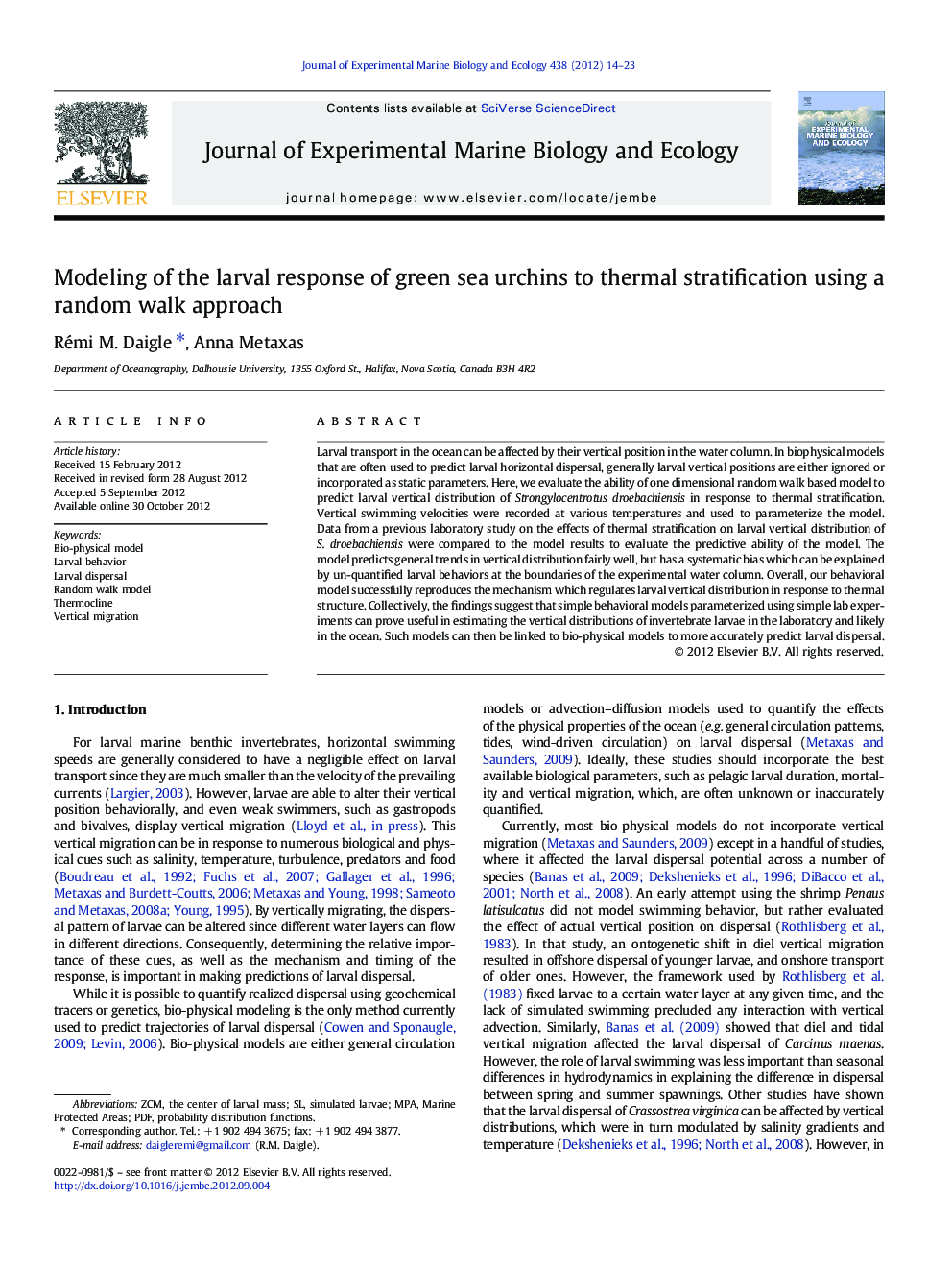| Article ID | Journal | Published Year | Pages | File Type |
|---|---|---|---|---|
| 4395830 | Journal of Experimental Marine Biology and Ecology | 2012 | 10 Pages |
Larval transport in the ocean can be affected by their vertical position in the water column. In biophysical models that are often used to predict larval horizontal dispersal, generally larval vertical positions are either ignored or incorporated as static parameters. Here, we evaluate the ability of one dimensional random walk based model to predict larval vertical distribution of Strongylocentrotus droebachiensis in response to thermal stratification. Vertical swimming velocities were recorded at various temperatures and used to parameterize the model. Data from a previous laboratory study on the effects of thermal stratification on larval vertical distribution of S. droebachiensis were compared to the model results to evaluate the predictive ability of the model. The model predicts general trends in vertical distribution fairly well, but has a systematic bias which can be explained by un-quantified larval behaviors at the boundaries of the experimental water column. Overall, our behavioral model successfully reproduces the mechanism which regulates larval vertical distribution in response to thermal structure. Collectively, the findings suggest that simple behavioral models parameterized using simple lab experiments can prove useful in estimating the vertical distributions of invertebrate larvae in the laboratory and likely in the ocean. Such models can then be linked to bio-physical models to more accurately predict larval dispersal.
► Experimental temperature affects larval swimming speed and vertical velocity. ► Rearing temperature only affects larval vertical swimming velocity. ► Larval response to a thermocline can be modeled as a modified random walk.
